As I explore the world of modern living, I see invisible threats everywhere. One big threat is the presence of extremely low frequency electromagnetic fields (EMF) in our lives. Uncover to protect life from low frequency.
These fields come from power lines, electrical wiring, and appliances at home. Health Canada and the World Health Organization are studying their health effects. They stress the importance of being aware and careful.
It’s vital to know about the dangers of low frequency EMFs to protect our health. We need to understand where these fields come from and how to avoid them.
Key Takeaways
- Low frequency EMFs are emitted by power lines and household appliances.
- Ongoing research is being conducted by Health Canada and the World Health Organization.
- Awareness of EMF sources is key to minimizing exposure.
- Precautionary measures can be taken to reduce health risks.
- Understanding low frequency dangers is crucial for health protection.
Understanding Low Frequency Radiation
Low frequency electromagnetic fields (EMFs) are everywhere in our lives today. They come from the flow of electric current. You can find them around many electrical devices.
What Are Low Frequency Electromagnetic Fields?
Low frequency EMFs have electric and magnetic fields. They range from 1 Hz to 3 kHz. You can’t see them, but they’re all around us.
It’s important to know they’re not like X-rays or gamma rays. Those are harmful high-frequency radiation.
Common Sources in Modern Life
Many things in our homes and workplaces emit low frequency EMFs. This includes wiring, appliances, and power lines. They’re everywhere.
Some common items that give off low frequency EMFs are:
- Refrigerators
- Air conditioners
- Computers and televisions
- Microwave ovens
| Source | Frequency Range | Typical Exposure Level |
|---|---|---|
| Household Wiring | 1 Hz – 3 kHz | Low |
| Power Lines | 1 Hz – 3 kHz | Moderate |
| Electrical Appliances | 1 Hz – 3 kHz | High (near the source) |
Knowing where these fields come from helps us reduce our exposure. This way, we can avoid the dangers of low frequency EMFs.
The Science Behind Low Frequency Dangers
Low frequency electromagnetic fields are everywhere in our modern lives. But we still don’t know much about how they affect us. As we use more technology, it’s key to understand the risks of low frequency exposure to keep us healthy.
How Low Frequencies Affect Human Biology
Research shows that low frequency EMFs can change how our bodies work. Being exposed to these fields can alter our cells. This might lead to changes in how our cells function.
Some studies found that low frequency EMFs can change the genes in our cells. These genes are important for how our cells talk to each other.
Research on Health Implications
Many studies have looked into the health risks of low frequency EMF exposure. The World Health Organization and the International Agency for Research on Cancer have found some links. They think there might be a connection between low frequency EMFs and health problems like childhood leukemia.
| Health Risk | Association with Low Frequency EMFs |
|---|---|
| Childhood Leukemia | Possible link according to WHO and IARC |
| Other Cancers | Limited evidence, further research needed |
| Neurological Effects | Some studies suggest potential impacts |
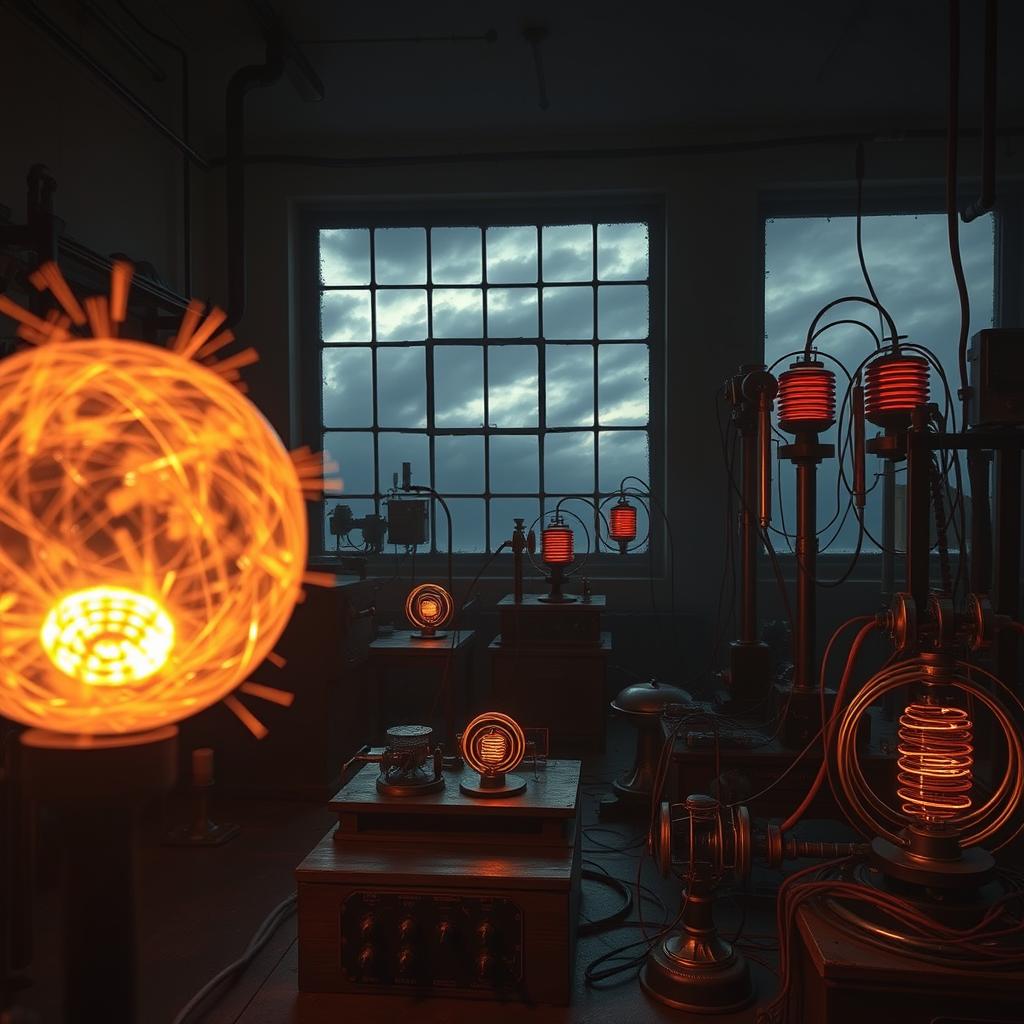
Signs You’re Experiencing Low Frequency Exposure
Low frequency EMFs are a hidden threat to our health. It’s important to know the signs. As we use technology every day, we need to watch out for health risks from low frequency radiation.
Physical Symptoms to Watch For
Research shows that low frequency EMFs can cause headaches, fatigue, and sleep problems. These symptoms might start small but can get worse over time. Pay attention to any health changes that could be due to low frequency exposure.
| Symptom | Possible Effects |
|---|---|
| Headaches | Frequent or severe headaches could be a sign of low frequency exposure. |
| Fatigue | Persistent tiredness or lack of energy may be linked to EMF exposure. |
| Sleep Disturbances | Difficulty sleeping or insomnia could be a result of low frequency radiation. |
Cognitive and Emotional Effects
Low frequency EMFs can also affect our minds and feelings. Some people feel anxious or irritable when around lots of EMFs. Knowing these effects can help you avoid them.
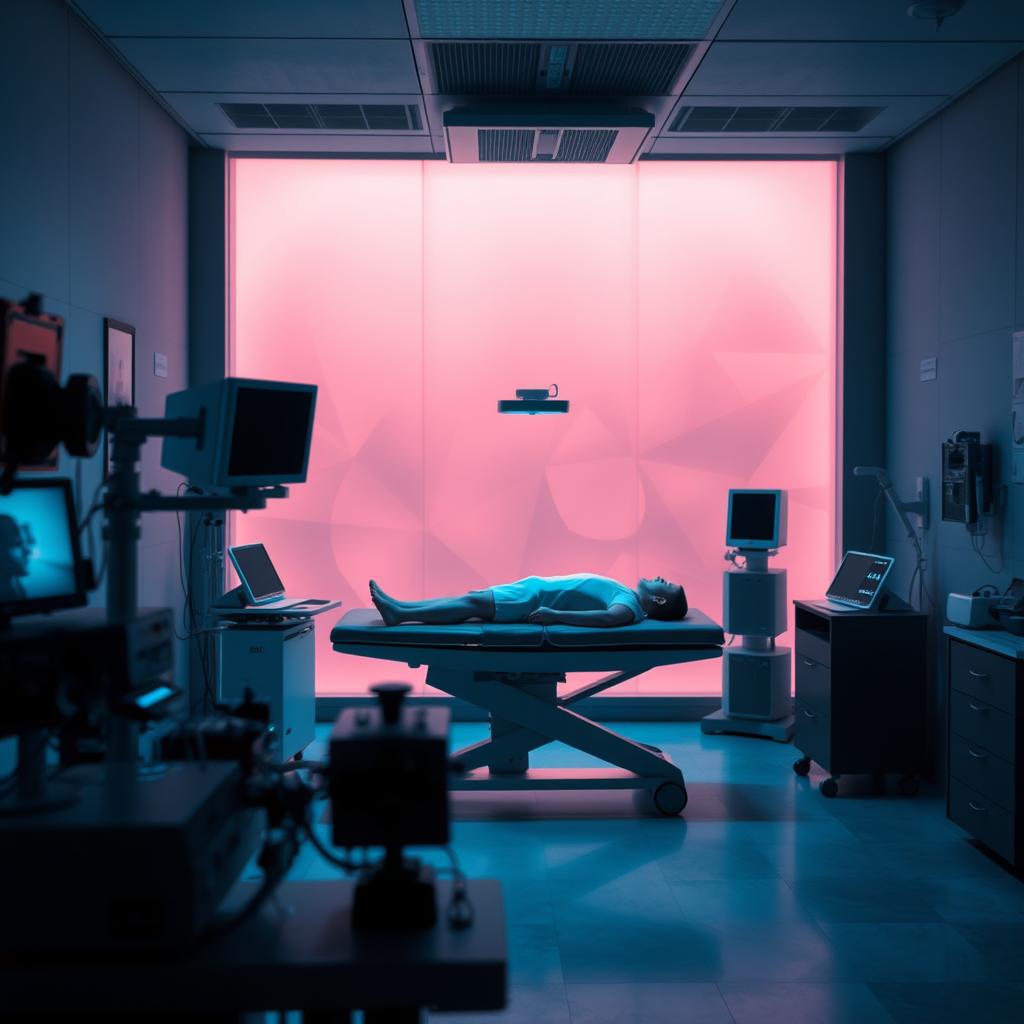
By recognizing the signs of low frequency exposure, you can protect yourself. This means being careful about where you are, cutting down on EMF exposure, and focusing on your health.
Mapping Low Frequency Hotspots in Your Home
Finding low frequency hotspots in your home is key to avoiding health risks from electromagnetic fields. To protect yourself, it’s important to know where these fields come from.
Common Household Emitters
Many common household items emit low frequency EMFs. These include:
- Wiring and Electrical Panels: Your home’s wiring and panels are big sources of low frequency EMFs.
- Electrical Appliances: Things like refrigerators, washing machines, and microwaves give off low frequency fields when on.
- Lighting: Some lights, especially those with ballasts like fluorescent ones, also emit low frequency EMFs.
Using EMF Meters for Detection
EMF meters can help find low frequency EMFs. These tools measure the strength of electromagnetic fields around you.
TriField TF2 EMF Meter
The TriField TF2 is a top pick for EMF measurement. It detects low frequency electric and magnetic fields, plus radiofrequency/microwave radiation.
Cornet ED88T EMF Meter
The Cornet ED88T is great for EMF detection. It measures both electric and magnetic fields across different frequencies.
GQ EMF-390 Multi-Field Meter
The GQ EMF-390 is a versatile meter. It can measure various electromagnetic fields, including low frequency magnetic and electric fields.
| EMF Meter Model | Frequency Range | Key Features |
|---|---|---|
| TriField TF2 | Low Frequency (ELF) | Measures electric and magnetic fields, RF/microwave radiation |
| Cornet ED88T | ELF to RF | Measures electric and magnetic fields, data logging capability |
| GQ EMF-390 | Multi-frequency | Measures magnetic and electric fields, high sensitivity |
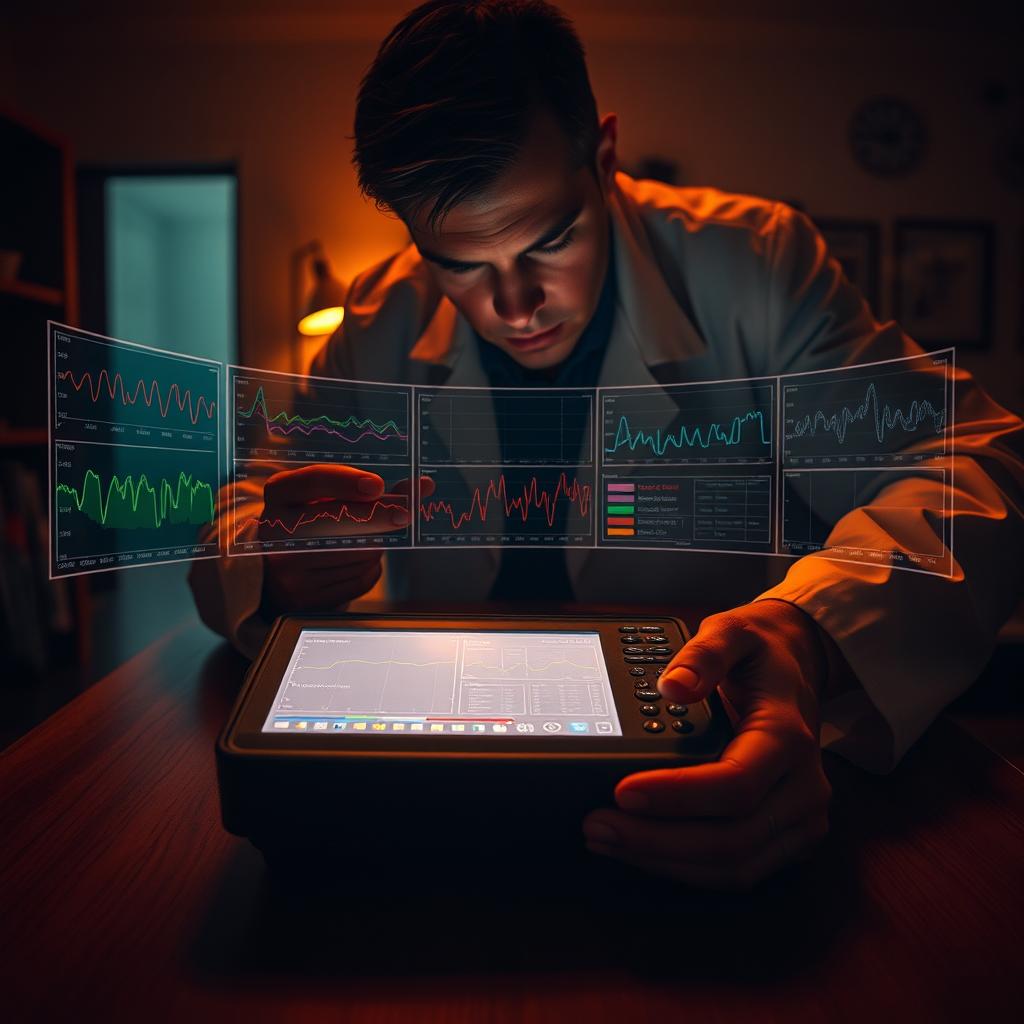
With these meters, you can spot high EMF areas in your home. Then, you can take steps to reduce your exposure. This helps shield you from low frequency danger.
How to Protect Your Life from Low Frequency Dangers
In our world filled with electricity, it’s vital to protect ourselves from low frequency dangers. To keep safe, we need to know how to defend against these threats. This means understanding and using the right protection methods.
Basic Protection Principles
There are key steps to defend against low frequency threats. First, moving away from sources of low frequency EMFs helps a lot. The farther you are, the less you’re exposed.
Using shielding materials, like those Health Canada suggests, can block or lessen EMF exposure. Also, changing electrical wiring and ensuring it’s grounded can help reduce your exposure.
Creating a Low-EMF Living Space
To make a low-EMF living space, start by finding and checking common sources of EMFs at home. These include smart meters, wiring, and appliances. Use EMF meters to find and measure low frequency radiation in your home.
By following these basic steps and making smart choices about your home, you can lower your exposure to low frequency dangers.
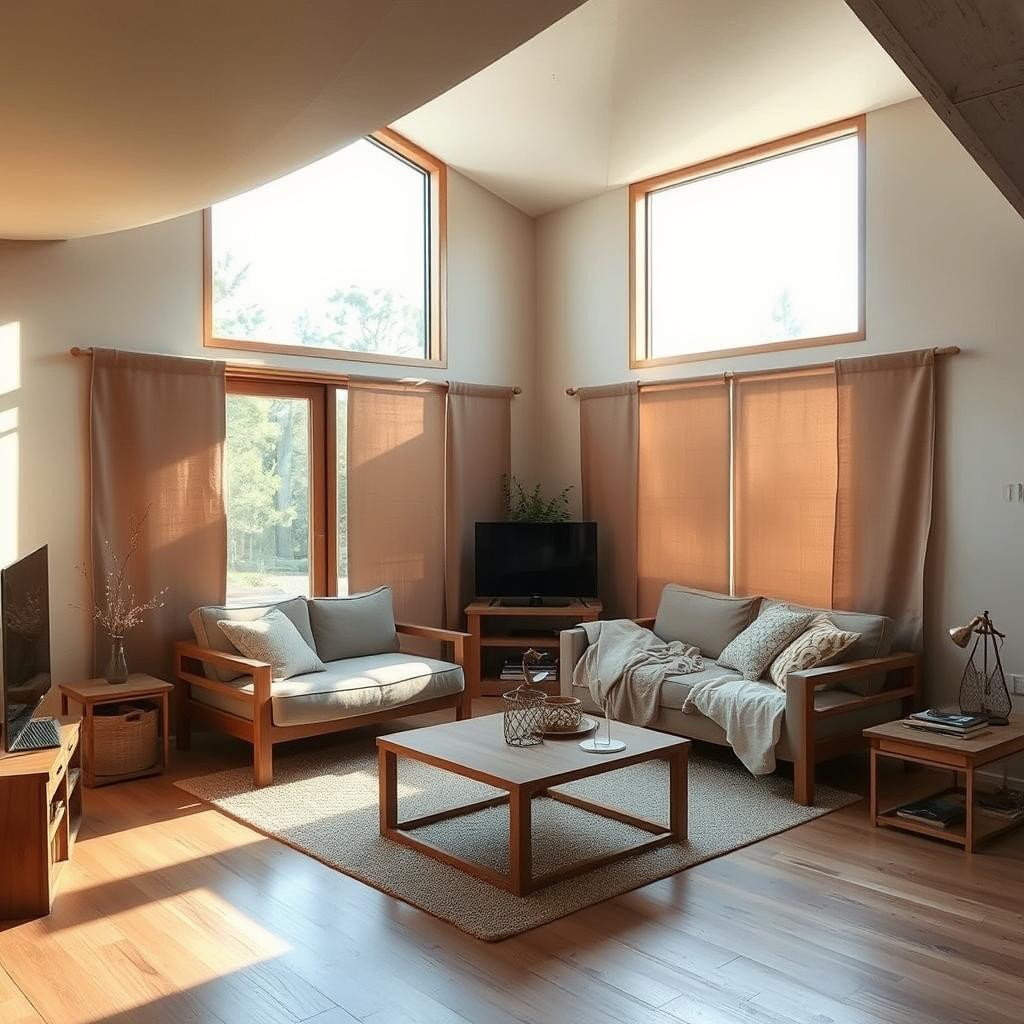
Top EMF Shielding Products for Home Use
To keep your home safe, it’s key to look at the best EMF shielding products. With more electromagnetic fields around us, protecting our homes is crucial.
EMF Paint and Wallpaper
EMF shielding paints and wallpapers are new ways to lower electromagnetic radiation at home. They are made to block or lessen EMF through walls.
- YShield HSF54 EMF Blocking Paint: This paint is a top pick for its strong shielding.
- WOREMOR EMF-Blocking Paint: It offers great EMF protection and is simple to use.
- Blocpaint EMF Protection Paint: It reliably shields against many EMF sources.
Shielding Fabrics and Curtains
Shielding fabrics and curtains can block EMFs in different home areas. This includes bedrooms and living rooms.
| Product | Shielding Effectiveness | Ease of Use |
|---|---|---|
| Swiss Shield Naturell Fabric | High | Easy |
| YSHIELD Shielding Fabric | Very High | Moderate |
| Amradield EMF Protection Curtains | High | Easy |
Window Films and Screens
Window films and screens block EMFs that come through windows. They’re great for homes with big windows or near EMF sources.
“Using window films can significantly reduce EMF exposure in your home, creating a safer living environment.” – EMF Protection Expert
- BlocFilm RF Shielding Window Film: It has high shielding against radio frequencies.
- DefenderShield EMF Window Film: It protects against many EMF sources.
- EMF-Protection Window Screens: They’re easy to install and shield well.
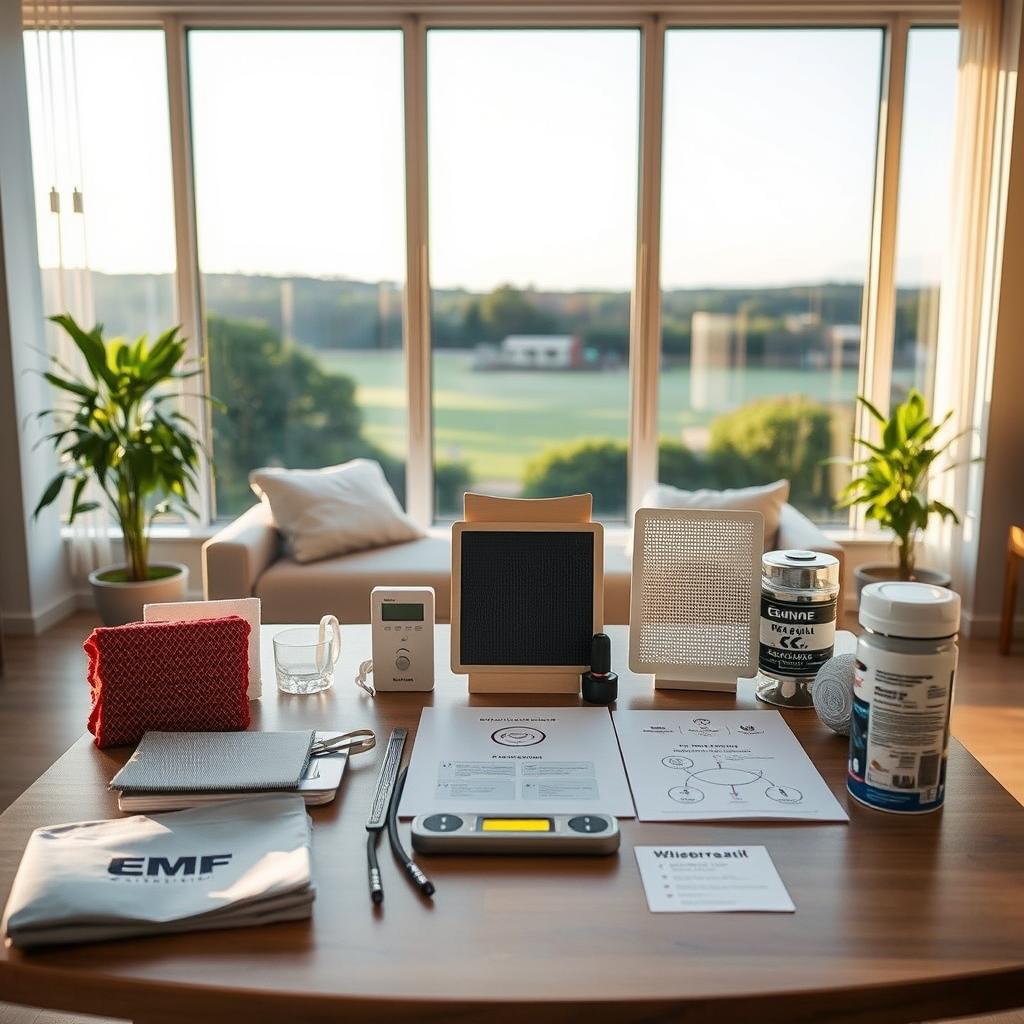
Personal Protection Devices Against Low Frequency
In our world filled with electricity, we need protection from low frequency radiation. This is why personal protection devices are key to keeping us safe. They help shield us from the dangers of low frequency radiation.
Wearable EMF Shields
Wearable EMF shields are made to be worn on the body. They protect against low frequency radiation. Here are some examples:
- Aires Tech Shield: Claimed to neutralize EMFs through its proprietary technology.
- Waveguard Qi-Shield: Designed to harmonize the body’s energy with its surroundings.
- Aulterra EMF Neutralizer: Uses a unique blend of materials to neutralize EMF radiation.
Pendants and Jewelry
Pendants and jewelry are a fashionable way to guard against low frequency EMFs. Here are some popular choices:
- Q-Link Pendant: Utilizes a proprietary circuit to balance the body’s energy.
- Shungite Pendants: Made from shungite, a mineral believed to have EMF-absorbing properties.
- Orgonite EMF Protection Jewelry: Contains a mix of metals and resin to allegedly neutralize EMFs.
Portable EMF Blockers
For those who prefer portable options, EMF blockers come in various forms:
- DefenderShield Phone Case: Blocks EMF radiation from mobile devices.
- SafeSleeve Anti-Radiation Case: Offers protection for laptops and tablets.
- Vest EMF Protection Pouch: A wearable pouch designed to protect against EMFs.
When picking a personal protection device, think about what you need. Using these devices daily can greatly lower your exposure to low frequency radiation.
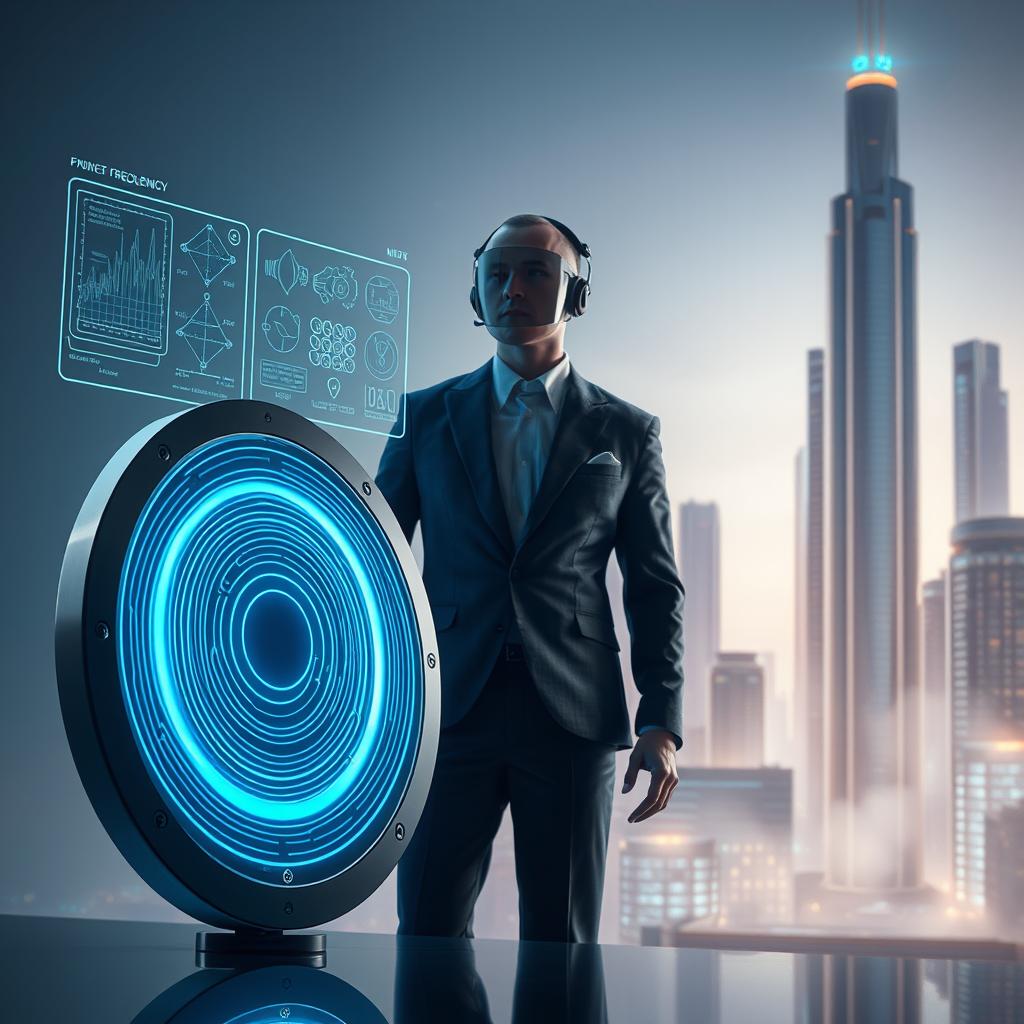
Protecting Your Bedroom for Better Sleep
Our bedrooms are where we spend a lot of our lives sleeping. It’s important to keep them safe from low frequency threats. A good sleep environment helps our bodies and minds feel refreshed.
Creating an EMF-Free Sleep Sanctuary
To lower your exposure to electromagnetic fields (EMFs) in your bedroom, think about using EMF shielding materials. Here are a few options:
- Canopy beds with EMF shielding: These beds use materials that block or lessen EMF fields.
- EMF shielding bed sheets: These special fabrics can protect you from EMFs while you sleep.
- Circuit cut-off switches: These devices turn off power to certain circuits when not in use, cutting down on standby EMF emissions.
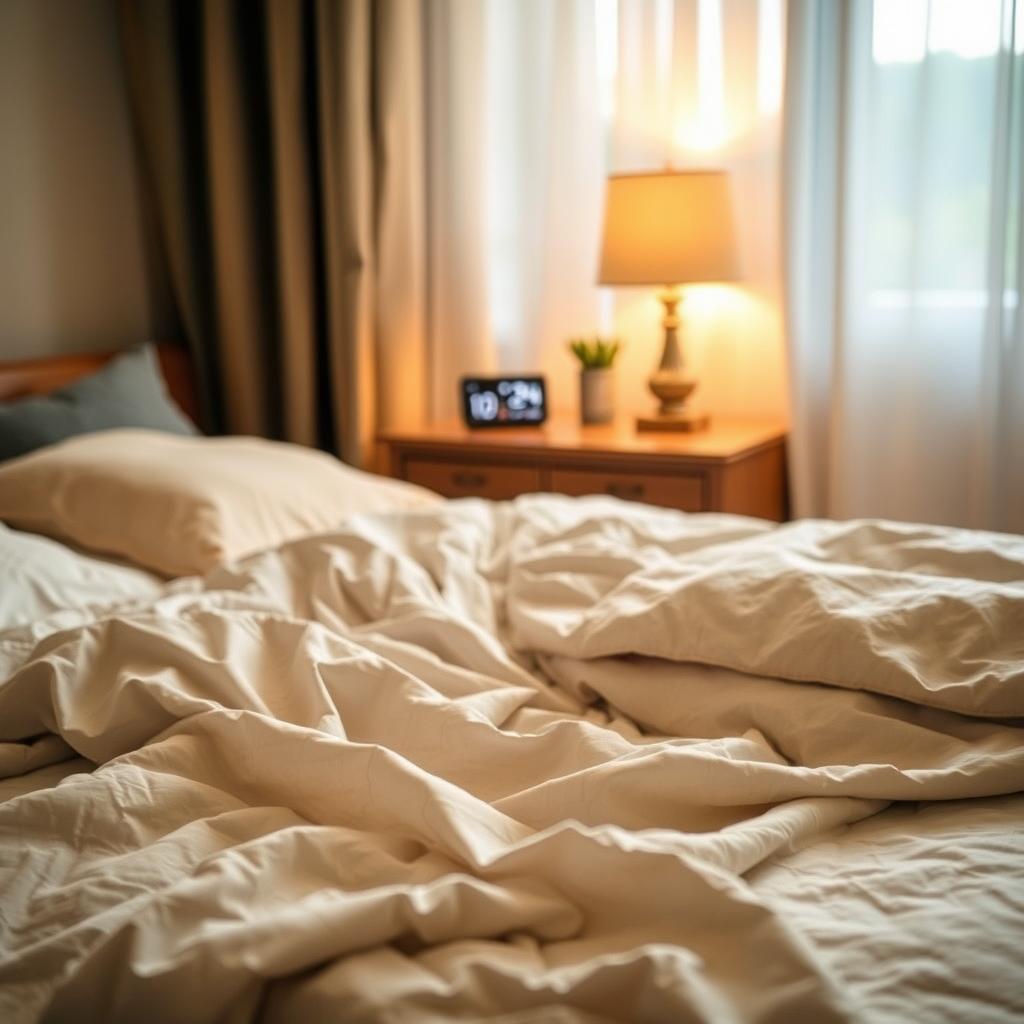
Nighttime EMF Protection Routines
Creating an EMF-free sleep space is just the start. You can also follow certain routines at night to lower your exposure:
- Device placement strategies: Keep electronic devices like phones and laptops away from your bed.
- Airplane mode protocols: Turn on airplane mode on devices when not in use to cut down on EMF emissions.
- Grounding techniques: These practices involve connecting your body to the Earth’s surface to improve sleep and lessen EMF effects.
By using these methods, you can greatly improve your sleep quality. This is by reducing your exposure to low frequency radiation.
Digital Detox: Reducing Exposure from Electronics
Modern life is filled with electronics, which means we need a digital detox. This helps us avoid the harm from low frequency radiation. By limiting our tech use, we can stay safe and healthy.
Setting Healthy Boundaries with Technology
It’s important to find a balance with technology for low frequency protection. We can do this by limiting screen time and making tech-free zones at home. Regular digital breaks also help.
These steps not only cut down on low frequency radiation but also boost our well-being.
Low-EMF Computing Practices
Choosing low-EMF computing practices is key to preventing low frequency harm. Here are some tips:
-
- Wired Connections vs. Wireless: Going for wired over wireless cuts down exposure a lot.
Wired Connections vs. Wireless
Using Ethernet cables and wired keyboards and mice reduces low frequency radiation.
-
- Computer Radiation Shields: Using shields on computers and devices can block or lessen radiation.
Computer Radiation Shields
These shields can block or lessen low frequency radiation from computers.
-
- Low-EMF Keyboards and Mice: Pick devices that emit lower EMFs for safer use.
Low-EMF Keyboards and Mice
Some brands make keyboards and mice with lower EMF emissions. They’re safer for regular users.

By following these tips, we can lower our exposure to low frequency radiation. This helps protect our health every day.
Shielding Your Body: Nutrition and Supplements
Nutrition and supplements are key to protecting our bodies from low frequency dangers. They help us fight off the effects of low frequency electromagnetic radiation. By choosing the right nutrients and supplements, we can boost our body’s defenses.
Foods That Support EMF Resistance
Eating foods that support our body’s natural defenses is important. Certain foods can help us fight off EMF exposure. Here are some key food groups:
Antioxidant-Rich Foods
Foods like berries and leafy greens are full of antioxidants. They help fight oxidative stress caused by EMFs.
Detoxifying Herbs and Spices
Herbs and spices like turmeric and ginger can detoxify our bodies. They may help reduce the effects of EMFs.
Mineral-Dense Superfoods
Superfoods rich in minerals, such as seaweed and nuts, support our health. They may also help us resist EMFs better.
| Food Group | Examples | Benefits |
|---|---|---|
| Antioxidant-Rich | Berries, Leafy Greens | Combat Oxidative Stress |
| Detoxifying Herbs/Spices | Turmeric, Ginger | Reduce EMF Impact |
| Mineral-Dense | Seaweed, Nuts | Support Overall Health |
Supplements for Electromagnetic Protection
Some supplements can offer extra protection against EMFs, in addition to a balanced diet.
Magnesium Supplements
Magnesium helps support cellular health. It can reduce the effects of EMF exposure.
Iodine for Radiation Protection
Iodine supplements may protect against some types of radiation. But, their effect on low frequency EMFs is still being studied.
Adaptogenic Herbs
Adaptogenic herbs like ashwagandha help our bodies adapt to stress. They may make us more resilient to EMF exposure.

By eating foods that protect us and taking the right supplements, we can shield our bodies from low frequency electromagnetic radiation. This proactive approach helps us stay safe.
Low Frequency Protection for Children and Sensitive Individuals
Children and those with sensitivities need extra care against low frequency threats. In today’s tech world, keeping our most vulnerable safe is key.
Special Considerations for Developing Bodies
Children’s bodies are still growing, making them more at risk from low frequency EMFs. Their smaller size and thinner skulls let EMFs penetrate deeper. This could affect their brains and bodies as they grow.
Creating Safe Zones for Vulnerable Family Members
It’s important to make safe spaces in our homes for kids and sensitive people. We need to find and lessen EMF sources.
EMF-Free Play Areas
Setting up play areas without EMFs is a big help. We can do this by keeping devices away and using shielding materials.
School Environment Protection
It’s crucial to work with schools to lower EMF exposure. We should check classrooms and find ways to reduce Wi-Fi and device EMFs.
Monitoring Children’s Device Usage
It’s important to watch how much kids use devices. Using devices in airplane mode or with shielding cases can cut down on exposure.

| Protection Strategy | Description | Benefit |
|---|---|---|
| EMF-Free Zones | Create areas with minimal EMF exposure | Reduced overall exposure |
| Device Limitation | Limit use of electronic devices | Less exposure during use |
| Shielding | Use EMF shielding materials and products | Blocks or reduces EMF radiation |
Workplace Protection Strategies
Spending a lot of time at work means we need to protect ourselves from low frequency harm. Offices have many sources of electromagnetic fields. These include computers, printers, and Wi-Fi routers.
Office Environment Assessment
To lower exposure, we must assess our office environment. This means identifying workplace EMF sources like computers and other electronic devices.
Identifying Workplace EMF Sources
First, find the EMF sources in your office. Look for computers, printers, and Wi-Fi routers. Knowing where these are helps us avoid them.
Desk Arrangement Optimization
Make your workspace safer by rearranging your desk. Move your computer monitor away from you. This reduces your exposure.
Negotiating with Employers
Talk to your employer about EMF exposure. Ask about using low-EMF equipment to lower risks.
Tools for Professional Settings
Using the right tools can help fight EMF exposure. Some good options are computer radiation filters and office-friendly EMF absorbers.
Computer Radiation Filters
These filters can be put on your computer monitor. They help cut down on electromagnetic radiation.
Office-Friendly EMF Absorbers
EMF absorbers can be placed near sources of electromagnetic fields. They help reduce their effects.
Low-EMF Office Equipment
When it’s time to get new office equipment, choose low-EMF options. This lowers your overall exposure.

Traveling Safely: Mobile Protection Methods
Traveling puts us in contact with many EMFs. It’s key to know how to protect ourselves. Whether you’re flying or staying in hotels, learning to shield against low frequency dangers is vital for your safety.
Air Travel EMF Concerns
Air travel exposes us to EMFs from airport scanners and in-flight systems. To lessen risks:
- Airport Scanner Protection: Use a shielding device or wear protective clothes through security scanners.
- In-Flight EMF Reduction: Switch off devices or use airplane mode to cut down exposure. Shielding pouches for your devices can also help.
- Travel-Sized EMF Shields: Get portable EMF shielding items like lap shields or fabric wraps for flights.
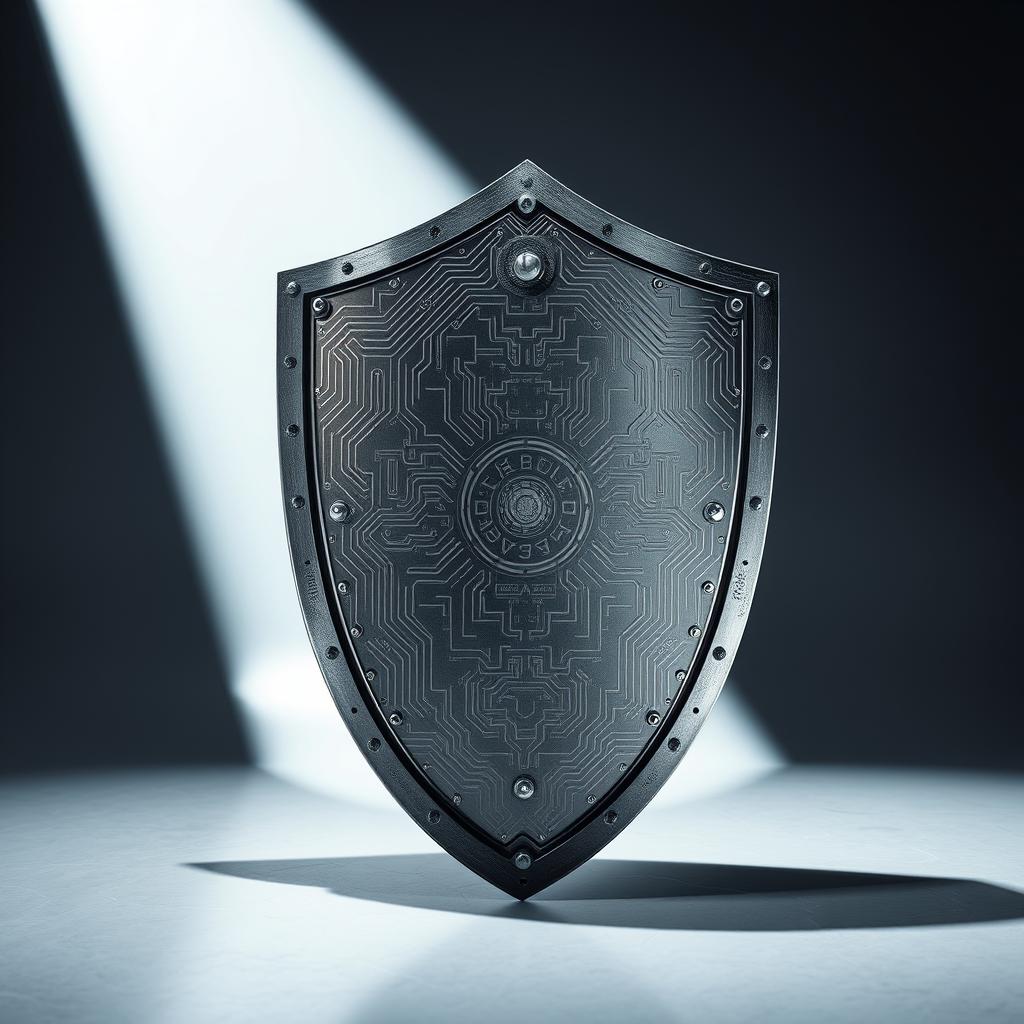
Hotel Room Protection Tactics
Hotel rooms can have high EMF levels from smart TVs, Wi-Fi routers, and other devices. To stay safe:
- Portable EMF Meters for Travel: Use a portable EMF meter to find and measure EMF levels in your room. This helps spot where the exposure comes from.
- Hotel Wi-Fi Mitigation: Turn off the Wi-Fi router when not needed or use a Wi-Fi blocker to lessen exposure.
- Travel Grounding Mats: Think about using a grounding mat to neutralize EMFs while you sleep.
Knowing about these EMF sources and taking steps to protect yourself can greatly reduce exposure while traveling. This makes your journey safer and healthier.
Building Biology: Creating a Low-EMF Home from Scratch
To protect against low frequency threats, designing a home with low EMF is key. This means using building biology to make a healthy, sustainable home.
Design Principles for Minimal Exposure
Creating a low-EMF home needs careful thought. This includes the wiring, floor layout, and materials used.
Smart Wiring Configurations
Wiring is very important. Using twisted pair wiring or other methods can greatly reduce EMF emissions.
EMF-Conscious Floor Plans
EMF-aware floor plans are crucial. Bedrooms and living areas should be far from high EMF sources like electrical panels and big appliances.
Building Material Selection
Choosing the right materials is key. Look for materials that block EMFs, like some insulation and window films.
Working with EMF-Conscious Contractors
It’s vital to work with contractors who know about EMF protection. They ensure your home is built right.
| Contractor Qualification | Description |
|---|---|
| EMF Awareness Training | Contractors should have training in understanding and mitigating EMF sources. |
| Experience with Low-EMF Projects | Contractors with experience in building low-EMF homes can provide valuable insights. |
| EMF Testing During Construction | Regular EMF testing during construction ensures that the home meets low-EMF standards. |

By following these design tips and choosing the right contractors, you can build a home. This home will not only reduce low frequency threats but also be a healthy place to live.
Future Trends in Low Frequency Protection
New trends in low frequency protection are changing how we keep ourselves safe. As we learn more about low frequency radiation, new tech and rules are coming out. These are making our protection better.
Emerging Technologies
The field of low frequency protection is seeing big tech leaps. Some key new tech includes:
Quantum Resonance Technology
This new tech uses quantum resonance to fight off bad low frequency radiation. It adds a new level of safety.
Biocompatible EMF Neutralizers
Biocompatible EMF neutralizers are being made. They work with our body’s natural frequencies. This helps lessen the bad effects of low frequency EMFs.
Smart Home EMF Management Systems
Smart homes are being made to watch and control EMF levels. This lets us make quick changes to cut down on low frequency radiation.

Policy and Regulation Developments
There are big changes in policy and rules to help with low frequency protection.
Changing Safety Standards
Rules are being updated to match the latest research on low frequency radiation. This makes sure our protection stays up to date with science.
Consumer Protection Initiatives
There are new efforts to protect consumers. These aim to teach people about low frequency radiation dangers. They also show what we can do to stay safe.
Industry Self-Regulation Efforts
The industry is also working on self-regulation. Companies are adopting and sharing the best ways to protect against low frequency radiation.
| Trend | Description | Impact |
|---|---|---|
| Quantum Resonance Technology | Neutralizes low frequency radiation | Enhanced personal protection |
| Biocompatible EMF Neutralizers | Harmonizes with human body frequencies | Effective mitigation of EMF impact |
| Smart Home EMF Management | Monitors and manages EMF exposure | Real-time adjustments for minimal exposure |
Conclusion: Taking Control of Your Electromagnetic Environment
Modern life brings us face-to-face with dangers from low frequency electromagnetic fields (EMFs). Knowing where these fields come from and how to lessen them is key. This way, we can protect ourselves and our surroundings from these threats.
Shielding ourselves from these dangers needs a mix of strategies. This includes using products that block EMFs and taking breaks from digital devices. Health Canada says knowing about EMF exposure helps us fight its effects. By using what we’ve learned, we can make our homes safer.
It’s important to reduce our exposure to low frequency EMFs for our health. Being aware of where these fields come from and how to avoid them helps us live better. I urge everyone to use the tips from this article to stay safe from low frequency EMFs.

